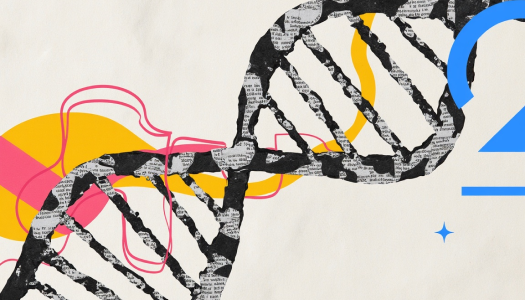by Vaibhavi M.
5 minutes
How Cell & Gene Therapies are Revolutionizing Medicine?
Learn how cell and gene therapies (CGT) modify cells and genes to treat diseases at their root, offering precision and lasting cures.

A young girl born with spinal muscular atrophy, a rare genetic illness that weakens muscles, was once destined for a life in a wheelchair and relied on machines to breathe. However, everything used to take a different turn on a single day, when a single infusion altered things. Her physicians did not prescribe a medication to treat her symptoms; instead, they used a healthy gene in her body to treat the cause of her illness. In a few months, the girl was able to sit and move around and even take her first steps independently.
There is no medical miracle here; there is cell and gene therapy (CGT). These advanced cure methods are no longer distant dreams of science fiction. They are actual, FDA-approved and transforming the treatment of cancer, rare diseases and many others. Cell and gene therapies (CGT) function as a groundbreaking medical frontier in the present time. CGT focuses on the primary disease origins by treating cellular and genetic elements by manipulating human cells or editing faulty genes, rather than relying on symptom management or suppression through traditional therapeutic methods. In this blog, we explore how CGT works, its key breakthroughs, growing global adoption, and why it’s redefining the future of medicine.
What is Cell Therapy?
Cell therapy involves the insertion, extraction, or modification of cells into the body for medical treatment. The therapeutic cells are from two potential sources: patient cells, known as autologous, and cells obtained from an external donor, known as allogeneic. For instance, in the process of CAR-T (Chimeric Antigen Receptor T-cell), the T-cells are modified for cancer cell destruction.
What is Gene Therapy?
Gene Therapy, on the other hand, makes essential genetic modifications for both faulty genes and sets up new genetic information. Medical research has identified techniques such as viral vectors, CRISPR-Cas9 technologies, and other innovative approaches. Gene therapy drug Zolgensma serves as an example by providing muscular spinal atrophy patients with a healthy SMN1 gene replacement therapy.
Key Advancements in Cell and Gene Therapies
- Precision and Personalization: The genetic makeup of each patient determines how CGT provides individualised treatments with exact medical parameters. This exact delivery system lowers the chance of adverse effects while boosting drug performance. Luxturna represents a treatment option that targets a particular genetic disorder responsible for inherited blindness, which provides possibilities for rare disease patients with few existing remedies.
- Curative Potential: Many CGTs offer a single curative treatment with extended benefits due to their distinctiveness from ongoing traditional medical treatments. Research has demonstrated that haemophilia gene therapy shows the potential to cut down or end the requirement for continuous clotting factor transfusions.
- Advancements in Technology: Another revolutionary innovation from technology is CRISPR-Cas9, which achieved practical and straightforward gene editing capabilities. Scientists are investigating CRISPR-Cas9 technology for the treatment of sickle cell disease and beta-thalassemia patients because it enables the production of healthy red blood cells through gene modification.
- Expanding Indications: The initial purpose of CGT is for rare genetic conditions, but now also expands into more frequent health challenges such as heart disease, diabetes and neurodegenerative disorders, including Parkinson's disease. According to the Alliance for Regenerative Medicine, more than 6,500 molecular diseases have been identified by scientists and biotechnologists, but only 500 treatments are available. In addition, more than 2,000 CGT trials are actively being executed worldwide, and around 10% of developers have increased from 2021- 2022. The market for cell therapy was estimated at $4.77 billion in 2022 and is projected to grow at a compound annual rate of 16.5% between 2023 and 2030.
CAR-T, mRNA & CRISPR Trends

- CAR-T: The cell‐therapy pipeline is booming, with over 100 CGT products approved worldwide, with 36% annual growth. CAR-T and related modified‐cell therapies make up ~32% of all CGTs (97% aimed at cancer). However, new trials increasingly target non‑cancer diseases (autoimmune, metabolic, etc.) and solid tumors. Next‑generation CAR-Ts use gene editing (e.g., CRISPR) to improve safety and create “off‑the‑shelf” allogeneic products.
- mRNA: Inspired by COVID-19, mRNA platforms are expanding. Companies are developing vaccines for influenza, RSV, HIV, Zika, and other infections. mRNA is also being tested in cancer vaccines and therapies. Its rapid, adaptable design makes it ideal for personalized or rare-disease treatments.
- CRISPR: Gene editing is moving to the clinic. In 2023, the first CRISPR-based therapy (for sickle-cell/thalassemia) was approved. Now ~250 clinical trials of gene-editing medicines are active globally, spanning blood disorders, cancers, infectious and other diseases. CRISPR is also being used to engineer better cell therapies (e.g, editing CAR-T cells for greater potency) and to develop new in vivo cures.
Manufacturing Bottlenecks & Solutions
- Bottlenecks: CGT manufacturing is costly and complex. Viral vector production (AAV, lentivirus) is an obstacle point. Scaling up often means switching production systems (e.g., from adherent to suspension cultures) and redesigning processes. Autologous therapies add extra hurdles, such as patient-specific cell handling and cold chain logistics. These factors create supply gaps and very high per-dose costs as demand grows.
- Solutions: The industry is aggressively scaling up. Biotech firms and CDMOs are building larger facilities and automated lines – for example, adding 200 L and larger bioreactors to boost viral vector yields. Purification methods are shifting to scalable chromatography systems. Companies also use AI and new bioengineering, like improved capsids, producer cell lines, to raise yields and cut costs. Off-the-shelf allogeneic cell banks and modular “plug-and-play” factories are other strategies to overcome bottlenecks.
Global Clinical & Regulatory Movement
- Pipeline & Approvals: Cell and gene therapies are advancing worldwide. As of mid-2024, about 32 gene therapies had approvals globally, along with dozens of other cell/RNA treatments. Thousands of trials are ongoing – e.g., 250 gene-editing trials (targeting hemophilia, cancer, HIV, etc. In 2024 alone, the FDA approved multiple new CGTs, including CAR-Ts and gene therapies. Other regulators are active too: for example, China and Canada approved their first gene therapies (CT-053, Beqvez) in 2024, and the EMA approved the first CRISPR therapy (Casgevy) for SCD/thalassemia.
- Regulatory: Agencies are adapting fast. The FDA created expedited programs (RMAT, Breakthrough) for advanced therapies and has reorganized its biologics center for CGTs. In Europe, CGTs are regulated as Advanced Therapy Medicinal Products (ATMPs) under EMA’s framework, with a dedicated ATMP committee. Japan, Canada, and others have similar specialized pathways. International harmonization efforts (ICH, regulatory guidances) and payer engagement are also growing, aiming to balance rapid patient access with safety and affordability.
Comparison with Traditional Therapies
- Approach: Traditional therapies focus on symptom control while neglecting the fundamental source of the issue. The primary goal of CGT is to locate and address the fundamental root problem that exists genetically or within cells.
- Duration: The length of treatment for conventional therapies includes continuous therapy through pills or injections and is bound to follow a long-term regimen, whereas cellular gene therapy targets a single intervention that might cure the patient permanently.
- Side Effects: The therapeutic use of CGTs leads to severe adverse reactions, which mostly appear as immune system responses. Therapeutic precision in these treatment methods generally results in fewer unwanted reactions than drugs.
- Cost: The initial cost of CGT treatments reaches millions (Zolgensma costs more than one million dollars per dose), although long-term expenditure benefits from their ability to stop ongoing therapy needs.
Conclusion
Cell and gene therapies are no longer something that exists in the future; they are transforming healthcare in the present. By going beyond surface-level treatment to correct the root genetic and cellular causes of disease, CGT offers targeted, potentially curative options for conditions once deemed untreatable. CGT is increasingly affordable as the innovations in CAR-T, mRNA, as well as in CRISPR are gaining pace, and manufacturing difficulties are being addressed.
With regulatory bodies streamlining approvals and global clinical momentum building, this frontier is opening rapidly. The medical field currently experiences an active shift due to the present applications of cell and gene therapies, which establish novel ways to fight disease. The promise of disease cures that were once considered untreatable emerges from adopting new technology and raising investment levels while extending clinical uses of CGT, which will transform healthcare in the future.
FAQs
Q1. What are the latest breakthroughs in Cell and Gene Therapy (CGT)?
Recent breakthroughs include the approval of the first CRISPR-based therapy (Casgevy) for sickle cell disease and thalassemia, expansion of CAR-T therapies beyond blood cancers to autoimmune diseases, and the use of mRNA platforms for vaccines targeting RSV, flu, and cancer.
Q2. What are the major manufacturing challenges in CGT?
Key challenges include limited viral vector production capacity, high costs of patient-specific (autologous) therapies, supply chain complexities, and lack of automation. Solutions like AI-driven process optimization, scalable bioreactors, and modular facilities are helping overcome these hurdles.
Q3. Are CGT treatments safe?
Yes, but they can cause immune-related side effects and require close monitoring. Safety has improved with better gene-editing precision (like CRISPR) and engineered viral vectors.
Q4. How accessible and affordable is CGT today?
Currently, CGT treatments are expensive, some exceeding $1 million per dose, but their one-time curative potential may offset lifelong treatment costs. Prices are expected to decrease as technology scales.




